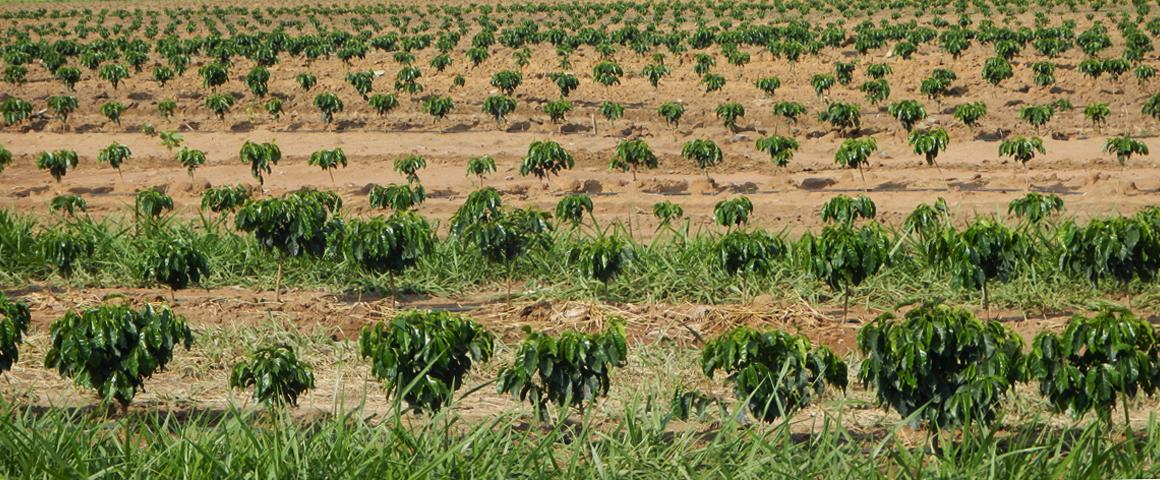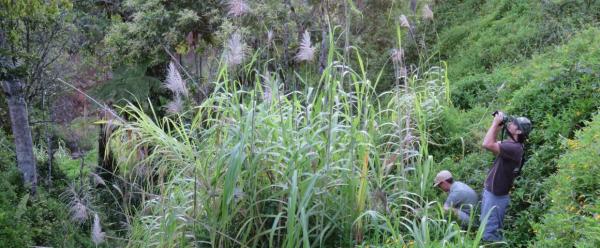Just out 27 October 2025
- Home
- Press area
- Press releases
- Assessing the carbon footprint of coffee farming
New review offers first recommendations on accurately assessing the carbon footprint of coffee farming

New Arabica coffee plantation, Angola © C. Bessou, CIRAD
Measurement of green coffee’s carbon footprint has traditionally varied, as is often the case for any agricultural lifecycle assessment. The Institute for Scientific Information on Coffee (ISIC) commissioned the French Agricultural Research Centre for International Development (CIRAD) to review current methodologies for green coffee, revealing a more precise picture of how to measure the environmental impact of the raw material used in one of the world’s most popular drinks.
Cécile Chéron-Bessou, lead CIRAD researcher on the review, explains: “Life cycle-based assessments are complex and based on numerous simplifications and choices. A key principle for these assessments is therefore absolute transparency around the exact choices and assumptions made as part of modelling. We hope our review will serve as a robust tool for transparent and sound measurement of green coffee’s carbon footprint – helping farmers and researchers to support good practices for sustainable coffee growing”.
CIRAD identified and reviewed 34 studies, alongside international agricultural guidelines on measuring carbon footprints. The studies were representative of the many different regions and settings coffee is grown in. For example, 72% of all studied farm systems were located in central and south America - making up 70% of global coffee production.
As highlighted in the review, the total carbon footprint of green coffee can vary greatly depending on a number of key factors. These include:
- Land Use Change – human-driven changes in use or management of land
- Varying levels of nitrogen fertilizer usage
- Coffee residues from pruning, leaf litter, and coffee husks - differing levels of residues vary emissions produced as they decompose and release stored carbon
- Wet process emissions – cleaning, sorting, and drying of coffee cherries and beans.
The published review was conducted in parallel to a more detailed report that provides a series of recommendations to standardize measurement in these areas. For example, simple guidance to identify representative measurements for different coffee farm systems and consistently apply land use change modelling, and outlining how best to estimate total biomass (including roots) of other trees present in coffee systems. As coffee is a perennial crop, which lives for many years without replanting, the review also provides guidance on accurate modelling and average measurement across trees in different phases of maturity.
References
- Chéron-Bessou C. et a. (2024) Unravelling life cycle impacts of coffee: Why do results differ so much among studies? Sustainable Production and Consumption. Published online.
- Grüter R., et al (2022) Expected global suitability of coffee, cashew and avocado due to climate change, PLOS ONE.
- CIRAD (2024) Review on Green Coffee Carbon Footprint.
About ISIC
The Institute for Scientific Information on Coffee (ISIC) is a not-for-profit organization, established in 1990 and dedicated to contributing and consolidating balanced scientific information on coffee production and consumption – providing a reference for professionals and authorities who address the health and wellbeing of both people and the environment.
It’s activities include:
- Study of scientific matters
- Evaluation of studies and scientific information
- Support of independent scientific research
- Dissemination of balanced scientific evidence and knowledge to a broad range of stakeholders
ISIC respects scientific research ethics in all its activities. ISIC’s communications are based on sound science and rely on scientific studies derived from peer-reviewed scientific journals and other publications.
About CIRAD
CIRAD is the French agricultural research and international cooperation organization working for the sustainable development of tropical and Mediterranean regions.
It works with its partners to build knowledge and solutions for resilient farming systems in a more sustainable, inclusive world. It mobilizes science, innovation and training in order to achieve the Sustainable Development Goals. Its expertise supports the entire range of stakeholders, from producers to public policymakers, to foster biodiversity protection, agroecological transitions, food system sustainability, health (of plants, animals and ecosystems), sustainable development of rural territories, and their resilience to climate change. CIRAD works in some fifty countries on every continent, thanks to the expertise of its 1800 staff members, including 1240 scientists, backed by a global network of some 200 partners. It also supports French scientific diplomacy operations.



























